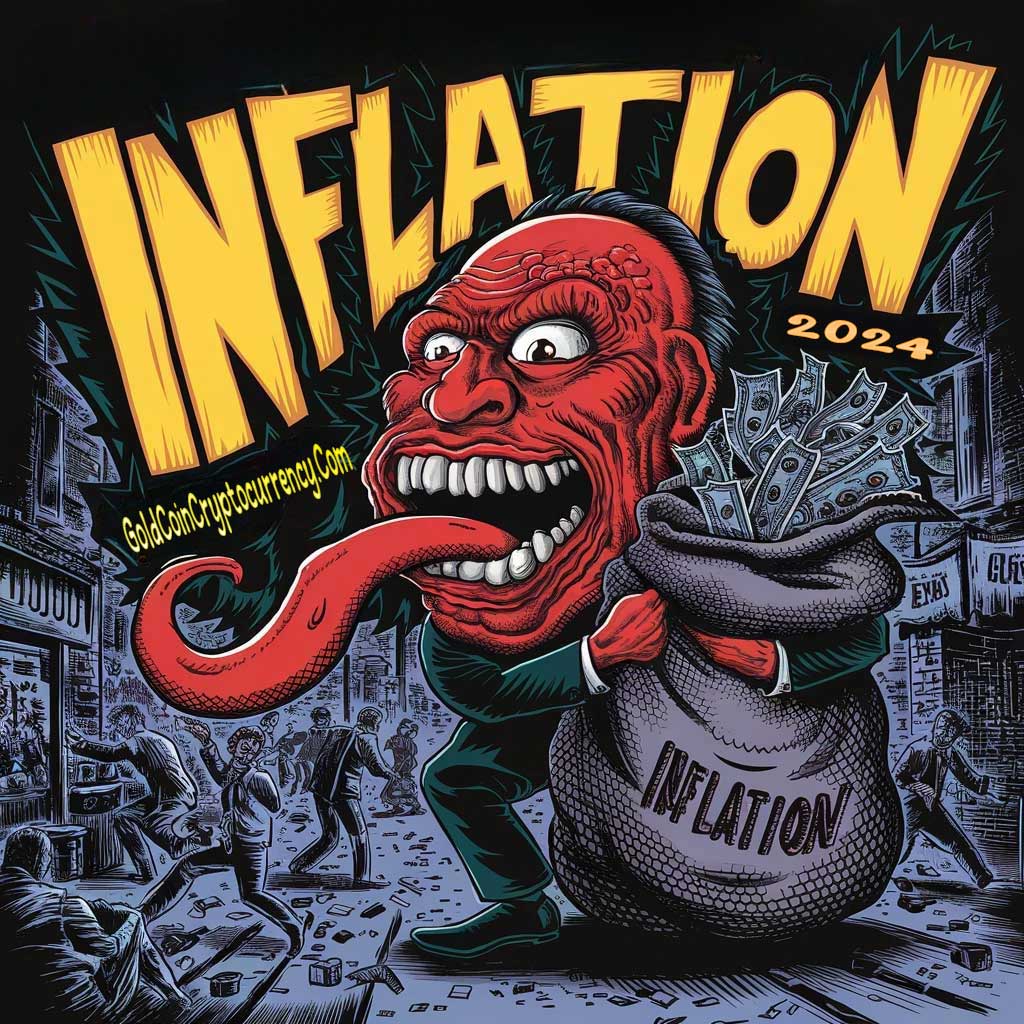Simply put, inflation is when prices of things we buy, like food, clothes, and toys, go up. This can make life harder because even though prices are rising, the amount of money people earn doesn’t always increase too. George Gammon, a well-known economic analyst, shares his thoughts on why he thinks inflation is a big problem right now and how the actions of the Federal Reserve (the Fed) might be making things even tougher. Here’s a straightforward explanation of inflation and the current economic issues based on Gammon’s insights, made simple for easier understanding. (In 3 simple points)
What is Inflation?
Inflation happens when the cost of goods and services starts to climb, which means with the same amount of money, you can buy less than before. For instance, if a chocolate bar costs $1 one year and $1.10 the next year, that increase in price is part of what we call inflation.
George Gammon’s Perspective on Inflation and Economic Trouble
George Gammon points out several reasons why the economy is facing challenges, especially related to inflation:
- Increased Money Supply: Gammon notes that when there is more money being printed and circulated in the economy, it often leads to inflation. More money chasing the same amount of goods can push prices up.
- High Demand vs. Low Supply: During times when people want to buy more products than are available (high demand) and there aren’t enough goods to meet this demand (low supply), prices rise, contributing to inflation.
- Wage Increases: While earning more money sounds great, Gammon suggests that if everyone starts earning more, businesses might increase prices to keep up with their higher wage costs, leading to more inflation.
The Negative Effects of Inflation In 2024
Here are some key points:
- Housing Affordability Crisis: The average median income earners can no longer afford the average median-priced home. This has created significant stress, as people struggle to secure housing within their means. (40%worry about meeting basic living expenses.)
- Debt Burden: Many Americans are heavily in debt, and this is exacerbated by rising living costs and stagnant wages. The burden of student loans, mortgages, and consumer debt is leading to financial instability for many.
- Inflation and Cost of Living: The cost of living has increased significantly, with many people finding it hard to keep up with inflation. Essentials like food, housing, and healthcare have become more expensive, putting a strain on household budgets.
- Stagnant Wage Growth: Despite the rising costs, wages have not kept pace with inflation. This has resulted in decreased purchasing power for the average worker, making it difficult to maintain a middle-class lifestyle.
- Job Market Instability: Many businesses are struggling, leading to layoffs and job insecurity. The potential for increased unemployment looms, which could further strain the financial situation of many households.
- Economic Policies and Their Impact: Economic policies, such as those related to monetary policy and government spending, have not effectively addressed these issues. Instead, they may have contributed to the growing wealth gap and economic instability faced by the average person.
These examples illustrate the multiple pressures on the average person in the current economic climate, particularly those related to housing, debt, inflation, and job security.
Why George Gammon Thinks the Economy is in Trouble
George Gammon believes several factors are contributing to economic difficulties:
- Inverted Yield Curve: This is a situation where long-term interest rates are lower than short-term rates. It’s unusual and often signals that people are worried about the future of the economy. It can make banks hesitant to lend money, which slows down economic growth.
- Banking Sector Weaknesses: Recent troubles in banks, like the collapse of some big names and tightening lending practices, show that banks are worried about the economy. This can make it harder for businesses and individuals to get loans for things like houses or starting new businesses.
- Increased Complexity and Risk in Banking: Banks are more connected than ever, both in the U.S. and globally. This means problems in one bank can quickly affect others, potentially leading to a wider economic crisis.
How the Fed Might Be Making Inflation Worse
George Gammon criticizes the Federal Reserve for not acting quickly enough or effectively to handle these economic issues. Here’s how he thinks the Fed might be making things worse:
- Reactive Instead of Proactive: Gammon argues that the Fed often reacts too slowly, waiting until problems have grown before stepping in. This can make situations like inflation worse because the measures needed become larger and more drastic.
- Poor Communication: Unclear messages from the Fed can create uncertainty in the markets. When investors don’t know what to expect, they might make decisions that can lead to more instability, like pulling out investments.
- Ignoring Long-Term Indicators: The Fed sometimes focuses on short-term data without recognizing long-term trends. This can lead to decisions that don’t address the root causes of problems like inflation.
Conclusion
Inflation affects everyone, from big businesses to families trying to budget for groceries. George Gammon’s insights provide a deeper understanding of why inflation is happening now and why it’s a sign of broader economic issues. By looking at the Fed’s actions and the state of banks, Gammon highlights the complexities and challenges in managing a stable economy. Understanding these elements can help us better prepare for economic fluctuations and protect our financial future.
